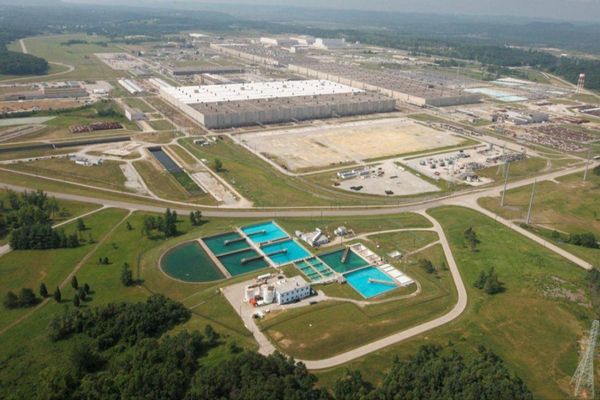
Classic Aussie film The Dish tells the true story of a group of eccentric scientists responsible for maintaining a satellite dish inauspiciously located on a remote Australian sheep farm.
To NASA’s alarm, the unconventional Aussie team in Parkes prove to be the world’s only hope for receiving the historical images of man’s first steps on the moon. When a reporter asks the group how they’re coping with the pressure, one of the characters pipes up: “A lot better before you opened your trap!”
Well, Australia is again boldly stepping into the space exploration business, with the construction of the world’s largest radio astronomy observatory, the Square Kilometre Array (SKA), beginning on Monday.
The SKA Observatory, or SKAO, is an intergovernmental effort and is being hailed as one of humanity’s biggest-ever scientific endeavours.
The SKA organisation is composed of 16 member states and partner organisations from five continents, and is headquartered in the United Kingdom.
The SKA telescopes will initially comprise 131,072 antennas in Australia (SKA-Low), built on Wajarri Country in Western Australia, and 197 dishes in South Africa (SKA-Mid), to be built in the Karoo in South Africa.
Together, the telescopes will provide an unparalleled view of the universe and will be one of the biggest science facilities on Earth.
The telescopes will be able to see the sky more clearly to reveal fainter details of it. It can also see more of the sky at once than other telescopes.
Among its many science goals, SKA-Low will explore the first billion years after the so-called “dark ages” of the universe, when the first-ever stars and galaxies were forming.

It will map the structure of the infant universe for the first time, enabling scientists to watch the births and deaths of the first stars and help us to understand how the earliest galaxies formed.
“Over the past fifty years we’ve seen our understanding of the universe revolutionised,” said Dr Sarah Pearce, SKA-Low telescope director and head of telescope operations in Australia.
“The SKA Observatory will define the next 50 years for radio astronomy, charting the birth and death of galaxies, searching for new types of gravitational waves and expanding the boundaries of what we know about the universe.
“The SKA telescopes will be sensitive enough to detect an airport radar on a planet circling a star tens of light years away, so may even answer the biggest question of all: Are we alone in the universe?”
In Australia, the SKA Organisation is collaborating with the CSIRO to build and operate the telescopes.
CSIRO’s executive director of Digital, National Facilities and Collections, Professor Elanor Huntington, said the benefits of the SKAO were not limited to astronomy.
“Much of the technology and engineering required for the telescope to work needs to be developed for the first time,” Professor Huntington said.
“These advances in engineering, signal processing and computing will not only benefit the astronomy community, but Australian industry as we move further into our data-driven future.
“The SKAO’s telescopes are providing an opportunity for Australians to innovate and share with the global community.
“We’re all coming together to not only learn more about the universe but drive advances in data handling and signal processing.”







